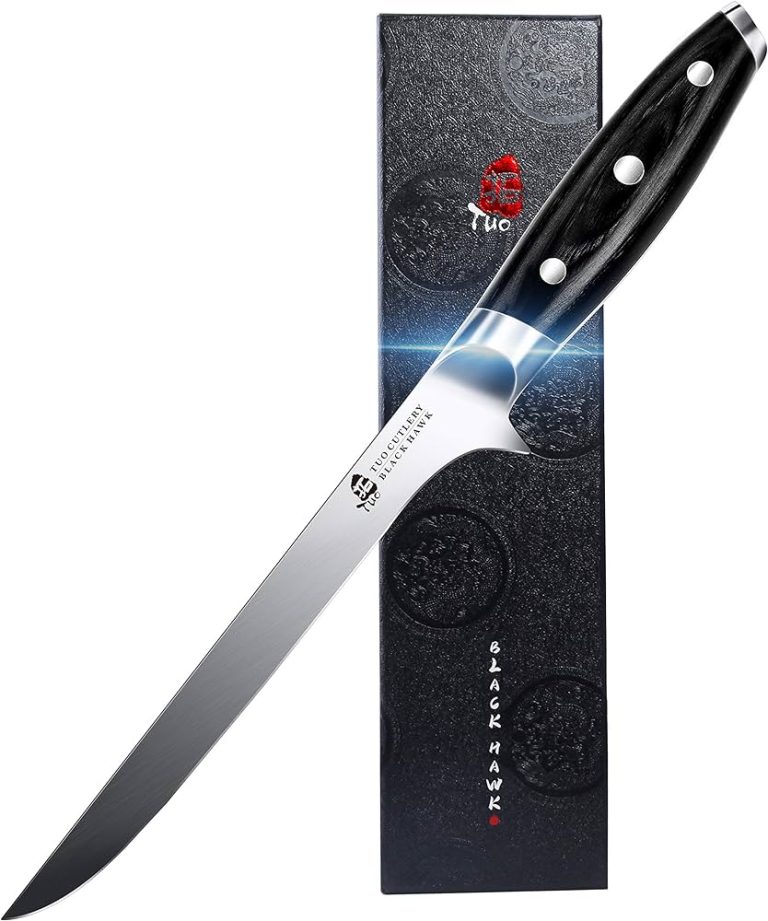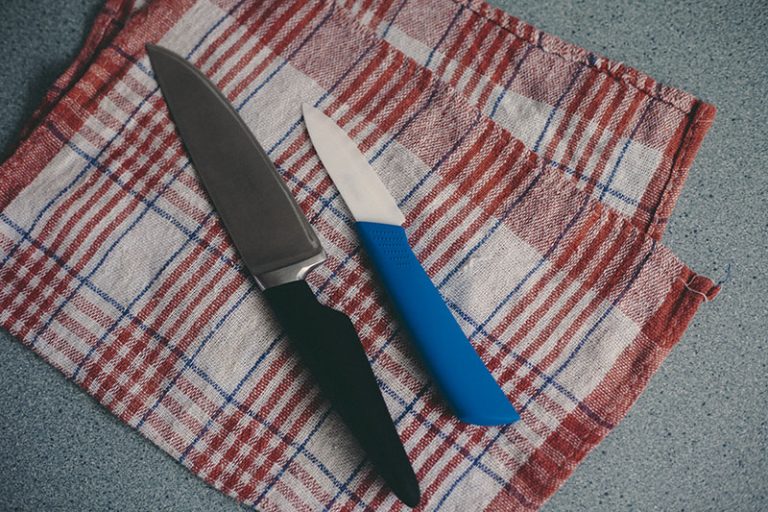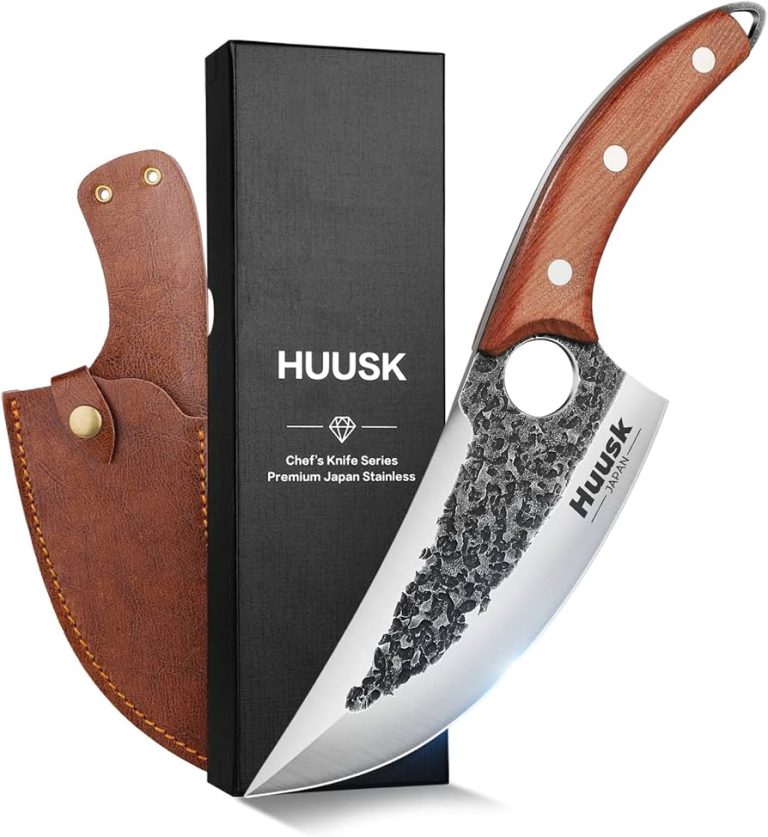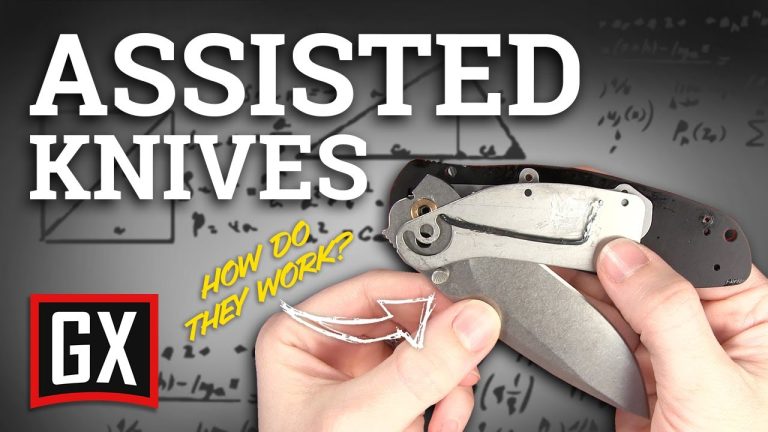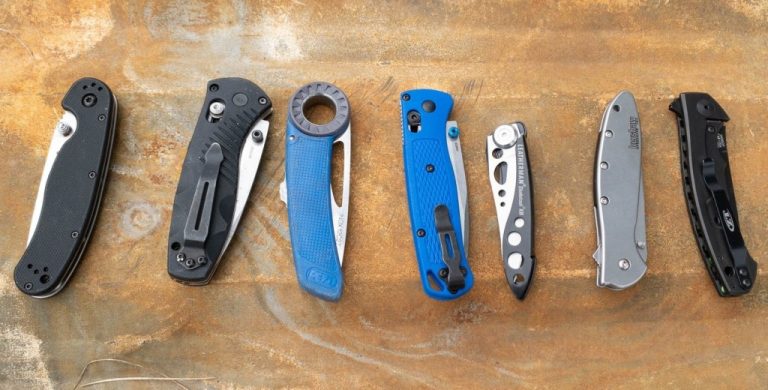Builders Knives Vs. Utility Knives: Which Is Right for You?
Builders knives and utility knives are both useful tools, but the right choice depends on your specific needs and preferences. We will explore the key differences, benefits, and applications of builders knives and utility knives to help you make an informed decision.
Whether you are a professional builder or a DIY enthusiast, understanding the strengths and weaknesses of each type of knife will enable you to select the tool that best suits your requirements. By considering factors such as blade design, handle ergonomics, and versatility, you can confidently choose between builders knives and utility knives and ensure you have the right tool for the job at hand.
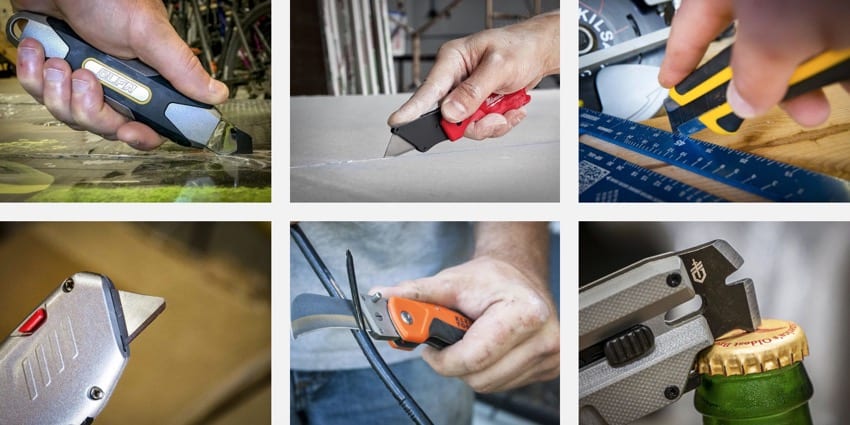
Credit: www.protoolreviews.com
1. Key Differences Between Builders Knives And Utility Knives
Are you torn between choosing a builders knife or utility knife? Learn the key differences and find out which tool suits your needs.
Builders Knives: Purpose, Features, And Applications
Builders knives are essential tools for professionals and DIY enthusiasts alike. Designed with durability and precision in mind, these knives are specifically crafted for tasks related to construction, carpentry, and general building work. Here are the key differences and features that make builders knives the go-to choice for these applications:
- Versatility: Builders knives excel in a wide range of applications, such as cutting drywall, cardboard, linoleum, insulation, and other building materials. They are also handy for scoring, marking, and trimming tasks.
- Ergonomic Design: These knives feature an ergonomic handle design for comfortable grip and precise control. This design minimizes hand fatigue during prolonged use, allowing builders to focus on their work without discomfort.
- Retractable Blade: Builders knives typically come with a retractable blade mechanism, allowing for safe storage and effortless blade changes. This feature ensures safety when not in use and convenient replacements when the blade becomes dull.
- Durability: Builders knives are built to withstand heavy use and tough work environments. High-quality materials such as stainless steel or carbon steel blades contribute to their longevity, ensuring they can withstand the demands of construction work.
- Extra Features: Some builders knives include additional features like built-in wire strippers, belt clips, and blade storage compartments. These extras add convenience and functionality to the tool, making it a versatile and practical choice for builders.
Utility Knives: Purpose, Features, And Applications
Utility knives, on the other hand, are multipurpose cutting tools suitable for various tasks in everyday life. From opening packages to cutting fabrics, these knives are designed with versatility and practicality in mind. Here are the key points that distinguish utility knives and make them a popular choice:
- General Practicality: Utility knives are perfect for day-to-day tasks that require precise cutting, such as opening boxes, cutting packaging materials, trimming tapes, or even crafting projects. Their versatility and ease of use make them a staple in households, offices, and workshops.
- Quick Blade Replacement: Utility knives often feature a quick-change mechanism that allows for swift and easy blade replacement. This feature is especially convenient for situations where a sharp blade is crucial or when dealing with tougher materials.
- Compact and Portable: Utility knives are typically compact and lightweight, making them easily portable. Their slim profile allows for hassle-free storage in pockets, tool belts, or bags, ensuring they are always within reach whenever needed.
- Safety Features: Many utility knives incorporate safety features such as blade locks or retractable blades. These mechanisms prevent accidental cuts and improve user safety, making them suitable for beginners or those working in busy environments.
- Blade Variety: Utility knives often support different blade types, including standard utility blades, hook blades, or serrated blades. This versatility allows users to adapt the blade to the specific task at hand, enhancing the knife’s overall usefulness.
Remember, choosing between builders knives and utility knives ultimately depends on the specific tasks you regularly encounter. Consider factors such as the materials you work with and the level of durability and convenience required. By understanding the purpose, features, and applications of each type of knife, you can make an informed decision and find the right tool for your needs.
1.1 Builders Knives: A Tool Designed For Construction
Discover the key differences between builders knives and utility knives and determine which one is the right choice for your construction needs. Explore the features and benefits of each tool to make an informed decision for your next project.
Builders Knives: A Tool Designed For Construction
Builders knives, also known as construction knives or utility knives, are essential tools for anyone working in the construction industry. These versatile knives are specifically designed to handle various construction tasks efficiently. Whether you are a professional builder or a DIY enthusiast, understanding the key features and benefits of builders knives can help you determine if they are the right tool for your needs.
Blades And Handle Materials:
- Blades: Builders knives feature durable and robust blades that are typically made of high-quality stainless steel. The blades are designed to withstand heavy-duty use and are known for their sharpness and longevity. They come in various lengths, allowing you to choose the blade size that suits your specific needs. Here are some commonly found blade options for builders knives:
- Straight blades: These are the most common type of blades found in builders knives. They are ideal for general-purpose cutting tasks, such as opening boxes, cutting drywall, or trimming materials.
- Hook blades: These specialized blades have a hooked shape at the end, making them perfect for cutting materials like carpet, linoleum, or roofing shingles. They provide clean and precise cuts while minimizing the risk of damaging the underlying surfaces.
- Serrated blades: Designed with teeth-like edges, serrated blades are excellent for cutting tough materials like insulation, PVC pipes, or rope. They provide increased gripping power and can make quick work of challenging tasks.
- Handle Materials: The handle of a builders knife plays a crucial role in ensuring comfort, maneuverability, and overall usability. Here are some common handle materials found in builders knives:
- Plastic handles: Builders knives with plastic handles are lightweight and offer excellent grip and control. They are often ergonomically designed and may have textured surfaces to prevent slippage during use.
- Rubberized handles: Knives with rubberized handles provide a secure grip, even when your hands are wet or sweaty. The rubber coating helps reduce fatigue and enhances comfort during extended use.
- Metal handles: Some builders knives feature metal handles, typically made of aluminum or stainless steel. These handles are durable and can withstand heavy-duty use. They are often preferred in environments where extra strength or impact resistance is required.
Multifunctional Use in Construction Projects:
Builders knives are highly versatile tools that can handle a wide range of tasks in construction projects. Here are some common uses of builders knives:
- Cutting and trimming materials: Builders knives can cut through various construction materials, including drywall, insulation, carpet, linoleum, plastic pipes, and roofing materials. Their sharp and sturdy blades allow for precise cuts, making them indispensable for accurate measurements and clean finishes.
- Stripping wires: A builders knife with a built-in wire stripping feature can save time and effort when working with electrical installations. It allows you to strip wires quickly and efficiently, eliminating the need for additional tools.
- Opening boxes and packages: The sharp and reliable blades of builders knives make them ideal for opening boxes and cutting through packaging materials. Whether you need to access building materials or open a package of tools, a builders knife can quickly get the job done.
- Scrapping and cleaning surfaces: The robust blades of builders knives are also useful for scrapping and cleaning tasks in construction projects. Whether you need to remove old paint, glue, or caulk from surfaces, a builders knife can help you scrape away residue effectively.
Builders knives are indispensable tools for construction professionals and DIY enthusiasts alike. With their durable blades and comfortable handles, these knives can handle various construction tasks efficiently. Whether you need to cut, trim, strip, or scrape, a builders knife is a versatile tool that can help you get the job done with precision and ease.
So, if you are looking for a tool designed specifically for construction projects, a builders knife should be at the top of your list.
1.2 Utility Knives: Versatility For Everyday Tasks
Experience the versatility of 1. 2 utility knives, ideal for everyday tasks. Compare builders knives and utility knives to find the right tool for you.
Utility Knives: Versatility For Everyday Tasks
Utility knives are versatile tools that offer a wide range of uses for both home and general purposes. They are designed for convenience and reliability, making them an essential tool in every toolbox. Let’s delve deeper into the key aspects of utility knives:
Blade Design And Replacement:
- Retractable Blade: One of the main features of a utility knife is its retractable blade mechanism. This design allows for safe storage and easy access to the blade whenever needed.
- Snap-off Blades: Many utility knives come with snap-off blades, which can be segmented into multiple sections. As the blade dulls over time, you can simply snap off the used section to reveal a sharp new edge, extending the lifespan of the blade.
- Quick and Easy Replacement: When the blade eventually becomes too dull for further use or breaks, utility knives offer quick and easy blade replacement. Simply replace the old blade with a new one, ensuring that the knife is always primed for optimal performance.
Common Uses In Home And General Purpose:
- Cutting Cardboard: Utility knives excel at cutting through cardboard, making them the go-to tool for opening packages, creating custom-sized boxes, or specialized crafts involving cardboard.
- Carpet and Flooring: Whether you need to trim carpet edges or make precise cuts on vinyl or laminate flooring, utility knives provide the necessary precision to achieve clean and accurate results.
- Plastic and Rope Cutting: From trimming plastic sheets to slicing through thick rope or twine, utility knives excel in cutting a variety of materials, making them indispensable for everyday tasks.
- DIY Projects: For all your DIY endeavors, utility knives prove to be a reliable companion. They handle tasks like scoring drywall, trimming insulation, or shaping wood with ease.
- Removing Stickers and Tape: Utility knives offer a convenient method for removing stickers, tape residue, or even wallpaper. The sharp blade easily tackles these stubborn adhesives without damaging surfaces.
Utility knives are must-have tools due to their versatility and convenience in various everyday tasks. With their retractable blades, easy replacement, and diverse applications, utility knives are a reliable choice for both home and general purposes. Whether you need to cut cardboard, trim carpet, or tackle DIY projects, a utility knife is an indispensable addition to your toolkit.
2. Factors To Consider When Choosing Between Builders Knives And Utility Knives
Choosing between builders knives and utility knives requires careful consideration of factors such as the intended use, durability, and comfort. These factors will help you determine which type of knife is the right fit for your needs.
Builders Knives Vs. Utility Knives: Which Is Right For You?
When it comes to selecting the perfect tool for your construction or DIY project, choosing between builders knives and utility knives can be a tough decision. Both offer various benefits and features that cater to different needs. To help you make an informed decision, let’s explore the key factors to consider when choosing between these two types of knives.
Project Type And Scope
- Consider the nature of your project: Before you make a decision, assess the type of project you will be working on. Are you involved in heavy-duty construction work or tackling smaller tasks around the house?
- Think about the materials involved: Different knives cater to different materials. If you work mainly with drywall, carpet, or other similar materials, utility knives might be the better choice. For tasks involving wood, builders knives can be more suitable.
- Evaluate project complexity: For intricate and precise work, utility knives with retractable blades might offer more control and maneuverability. On the other hand, builders knives with fixed blades can provide better stability for larger, more demanding projects.
Safety Considerations
- Blade locking mechanism: Builders knives typically feature a fixed blade design, which reduces the risk of unexpected blade movement. Utility knives, especially those with retractable blades, provide a built-in safety feature that allows you to safely lock the blade in place when not in use.
- Handle design: Builders knives often come with sturdy, ergonomic handles that offer a secure grip, reducing the chances of accidents caused by slipping. Utility knives may have handles with different grips and materials, allowing you to choose the design that best suits your preferences and comfort level.
- Blade change mechanism: Assess the ease and safety of changing blades. Some utility knives feature a quick and easy blade replacement system, ensuring minimal risk during the blade change process.
Durability And Maintenance
- Blade lifespan: Builders knives tend to have thicker, more durable blades suitable for heavy-duty tasks, ensuring longevity and reducing the need for frequent blade replacements. Utility knives often have replaceable blades that can be easily swapped out when they become dull.
- Handle durability: Consider the materials used for the handle construction. Builders knives are often built with robust materials such as hardwood or sturdy plastics, making them more durable in tough working conditions. Utility knives may have handles made of lightweight materials like aluminum or reinforced plastic, which provide a balance between durability and portability.
- Maintenance requirements: Both builders knives and utility knives may require maintenance to maximize their lifespan. Checking for rust, sharpening blades when needed, and keeping the handles clean and dry are essential maintenance practices for any knife.
Remember, choosing between builders knives and utility knives ultimately depends on your specific project requirements, safety preferences, and durability expectations. By carefully considering these factors, you can make an informed decision that ensures both efficiency and safety throughout your construction or DIY journey.
2.1 Project Type And Scope: Choosing The Right Tool
When choosing between builders knives and utility knives, it’s important to consider your specific needs. Builders knives offer durability and precision, while utility knives provide versatility and ease of use. Determine which features are most important for your project to make the right tool choice.
Builders Knives Vs. Utility Knives: Which Is Right For You?
When it comes to selecting the perfect cutting tool for your project, considering the type and scope of the task plays a crucial role. Depending on whether you are working on a construction project with heavy-duty applications or tackling lighter tasks at home or in DIY projects, builders knives and utility knives offer distinct advantages.
Let’s now delve into the considerations for each category.
Construction Projects: Heavy Duty Applications
For construction projects that involve heavy-duty applications, builders knives are the go-to option. These knives are designed to withstand rigorous use and handle tough materials with ease. Here are some key points to consider:
- Robust and durable: Builders knives are built to be sturdy, providing durability and long-lasting performance, even in demanding conditions.
- Wide blade: These knives typically have a wider blade, allowing for efficient cutting of materials such as drywall, carpet, roofing materials, and insulation.
- Enhanced grip: Builders knives often feature ergonomic handles designed to provide a comfortable grip, ensuring precision and control during intense cutting tasks.
- Safety measures: Some builders knives come with safety features like retractable blades, ensuring a reduced risk of accidents when not in use.
- Versatility: With their ability to handle various materials and tasks, builders knives are a versatile choice for construction projects, making them a reliable tool for contractors and professionals.
Home And Diy Projects: Lighter Tasks
When it comes to lighter tasks in home and DIY projects, utility knives are the ideal choice. These knives offer convenience and flexibility while delivering sharpness and precision. Here’s what you should consider:
- Compact and portable: Utility knives are often compact and easy to carry around, making them suitable for small-scale projects.
- Sharp and precise: Equipped with replaceable blades, utility knives remain razor-sharp, ensuring precise cuts in materials like cardboard, plastic, and lightweight wood.
- Safety features: Many utility knives are designed with safety mechanisms, such as blade locking mechanisms, to prevent accidental injuries when handling or storing the tool.
- Ease of use: These knives are user-friendly, with features like quick blade change systems, allowing for efficient blade replacement without the need for additional tools.
- Affordable: Utility knives are generally more budget-friendly compared to builders knives, making them suitable for occasional use and DIY enthusiasts.
Now that you have a better understanding of the considerations for construction projects and home/DIY tasks, you can make an informed decision when choosing between builders knives and utility knives. Remember to assess the project type, scope, and the materials you will be working with to ensure you select the right tool for the job.
Happy cutting!
2.2 Safety Considerations: Protection And Precision
Builders knives and utility knives both offer protection and precision in construction projects. Understanding the safety considerations can help you determine which one is right for your needs.
Builders Knives Vs. Utility Knives: Which Is Right For You?
When it comes to choosing a knife for your construction or DIY projects, safety considerations should be a top priority. Both builders knives and utility knives offer unique features that cater to different needs. In this section, we will explore the safety aspects of these knives, focusing on the blade locking mechanisms for builders knives and the ergonomic design for utility knives.
Blade Locking Mechanisms For Builders Knives:
Builders knives are specifically designed for heavy-duty tasks in construction and other similar projects. The blade locking mechanism plays a crucial role in ensuring the safety of the users. Here are some key points to consider:
- Lock-back mechanism: Builders knives often feature a lock-back mechanism that securely holds the blade in place during use. This mechanism prevents accidental blade movement and minimizes the risk of injuries.
- Quick-release button: Some builders knives come with a quick-release button that allows for easy and safe blade changes without the need for additional tools. This feature enhances convenience while maintaining safety measures.
- Multi-position locking: Builders knives may offer multi-position locking capabilities, allowing users to adjust the blade’s position according to their specific needs. This feature provides added control and precision while reducing the chances of accidents.
Ergonomic Design For Utility Knives:
Utility knives are versatile tools used in various DIY projects, crafting, and general-purpose applications. The ergonomic design of utility knives focuses on user comfort and safety. Here are some important considerations:
- Non-slip grip: Utility knives often come with a non-slip grip, which provides a secure and comfortable hold. This feature ensures better control during cutting tasks, reducing the risk of accidents caused by slipping.
- Finger guard: Many utility knives feature a finger guard near the blade area. This guard acts as a barrier, preventing accidental contact between the user’s fingers and the sharp blade. It adds an extra layer of protection and enhances safety, especially during intricate cutting jobs.
- Retractable blade: The retractable blade feature is a hallmark of utility knives. It allows users to retract the blade fully or partially when it’s not in use, minimizing the risk of injuries when handling or storing the knife.
Both builders knives and utility knives offer safety features tailored to their specific applications. The blade locking mechanisms of builders knives ensure stability and prevent accidental blade movement, while the ergonomic design of utility knives prioritizes user comfort and control.
Consider your project requirements and choose the knife that best aligns with your safety needs for a safer and more efficient work experience.
2.3 Durability And Maintenance: Longevity And Ease Of Use
Durability and maintenance play a vital role in choosing the right knife. Builders knives are known for their longevity while utility knives offer ease of use, making the decision dependent on your specific needs.
Blade Sharpness And Retention:
- A builder’s knife generally has a thicker and sturdier blade. It is designed to withstand heavy-duty tasks, which may result in slower dulling compared to a utility knife.
- Conversely, utility knives are renowned for their razor-sharp blades. They are perfect for precise cutting and scoring tasks, but they tend to require frequent blade changes due to quicker dulling.
- Consider the type of projects you typically undertake. If you work on construction sites, a builder’s knife with a durable blade might be more suitable. However, if you frequently engage in intricate and delicate tasks, a utility knife’s sharpness might be more important.
Cleaning And Storage Tips:
- Proper maintenance prolongs the lifespan of your knife. Here are some cleaning and storage tips to keep in mind:
- Clean the blades after each use: Use a mild soap and warm water solution to remove debris and ensure your knife is free from any dirt or grime.
- Dry thoroughly: After cleaning, make sure to dry the knife completely to prevent rust or corrosion.
- Oil the blades: Applying a thin coat of oil to the blades will help prevent rust formation during storage.
- Store securely: Use a sheath or a knife block to protect the blade from damage and to ensure safe storage.
- Avoid exposure to extreme conditions: Keep your knife away from excessive heat or moisture as it can damage the handle or affect the blade’s sharpness.
Remember, understanding the durability and maintenance aspect of both builder’s knives and utility knives is crucial in choosing the right option for your specific needs. By considering their blade sharpness and retention, as well as implementing proper cleaning and storage practices, you can ensure the longevity and ease of use of your chosen knife.
3. Pros And Cons Of Builders Knives And Utility Knives
Builders knives and utility knives both have their advantages and disadvantages. Builders knives are durable and ideal for heavy-duty tasks, while utility knives are versatile and great for precision work. Choose the tool that suits your needs best.
Builders Knives: Advantages And Disadvantages
Builders knives are essential tools used in various construction and remodeling projects. They offer unique features that make them suitable for certain tasks. However, like any tool, builders knives have their pros and cons. Let’s explore the advantages and disadvantages of using builders knives:
- Versatility: Builders knives are designed to handle a wide range of materials, including wood, drywall, and PVC. This versatility makes them ideal for tasks such as cutting, scoring, and trimming during construction projects.
- Durability: Builders knives are built to withstand rugged conditions commonly found in construction sites. They are typically made with strong materials such as stainless steel, ensuring long-lasting performance even with heavy use.
- Easy blade replacement: Most builders knives feature a quick and easy blade replacement mechanism. This allows users to swap out dull blades for sharp ones without needing additional tools, saving time and improving productivity.
- Enhanced safety features: Many builders knives come with safety features such as retractable blades and blade-locking mechanisms. These features help prevent accidents and injuries, making them a reliable choice for construction workers.
Despite their benefits, builders knives also have a few drawbacks worth considering:
- Limited precision: Due to their design and blade width, builders knives may not offer the same level of precision as utility knives when it comes to tasks that require detailed and intricate cuts.
- Bulkier size: Builders knives tend to be larger and bulkier compared to utility knives. While this can be an advantage for certain heavy-duty tasks, it may be less convenient for tasks that require a lighter and more maneuverable tool.
- Higher risk of accidents: The larger size and more robust nature of builders knives can pose a higher risk of accidents if not handled properly. Users need to exercise caution and proper technique to minimize the risk of injuries.
Utility Knives: Advantages And Disadvantages
Utility knives are versatile tools commonly used for a wide range of everyday tasks. They are designed to offer practicality and precision, but they also have their own set of pros and cons. Let’s explore the advantages and disadvantages of using utility knives:
- Precision cutting: Utility knives are known for their sharp and narrow blades, making them perfect for tasks that require precision, such as opening boxes, cutting paper, or scoring materials.
- Compact and portable: Utility knives are generally compact and easy to carry around. Their lightweight design and small size make them convenient for tasks that require agility and mobility.
- Safety features: Many utility knives come with safety features such as retractable blades and blade-locking mechanisms. These features help prevent accidental cuts or injuries when the knife is not in use.
- Ease of use: The simple design of utility knives makes them easy to handle, allowing for quick and efficient cuts. They are often favored by DIY enthusiasts and professionals alike for their user-friendly nature.
However, utility knives also come with their own set of disadvantages:
- Limited strength: Utility knives are not as robust as builders knives, making them less suitable for heavy-duty tasks. Excessive force or pressure on the blade can lead to damage or breakage.
- Narrow range of materials: While utility knives are versatile, they may not be suitable for all materials. Thick or tough materials may require a more heavy-duty tool like a builders knife.
- Blade replacement complexity: Some utility knives may have a more intricate blade replacement process compared to builders knives. This could be time-consuming and require additional tools.
Now that we’ve examined the pros and cons of both builders knives and utility knives, you can make an informed decision based on your specific needs and the tasks at hand. Whether you prioritize versatility, precision, or ease of use, choosing the right knife will ensure successful completion of your projects.
3.1 Builders Knives: Pros And Cons
Builders knives and utility knives each have their own advantages and drawbacks. Builders knives offer sturdiness for heavy-duty tasks, but utility knives provide versatility for various applications. Choose the right tool based on your specific needs and requirements.
Builders Knives Vs. Utility Knives: Which Is Right For You?
Builders knives are specifically designed for construction-related tasks, offering distinct advantages and some limitations. Let’s delve into the pros and cons of using builders knives:
Strength And Robustness
- Builders knives are crafted with durability in mind, constructed from high-quality materials such as stainless steel or carbon steel. This ensures they can withstand the rigors of heavy-duty cutting tasks on construction sites.
- The robustness of builders knives makes them suitable for tackling tough materials like drywall, insulation, roofing materials, and even light-duty demolition work.
- Their sturdy construction ensures greater reliability, reducing the risk of blades breaking or bending during demanding tasks.
Limited Versatility For Non-Construction Tasks
- While builders knives excel in construction-related applications, their functionality beyond these tasks is somewhat limited. It is important to consider their shortcomings when contemplating usage for non-construction activities.
- Builders knives typically have a fixed blade design, which can be less versatile compared to utility knives with retractable blades. The fixed blade limits their adaptability to various cutting needs, especially when precision and fine cutting are required.
- Due to their robust and heavy-duty nature, builders knives may feel bulky and less comfortable to handle during tasks that require more dexterity and finesse.
Builders knives boast exceptional strength, robustness, and the ability to handle demanding construction tasks effectively. However, they may fall short in terms of versatility, particularly when applied to non-construction activities that demand more precision and adaptability.
3.2 Utility Knives: Pros And Cons
Discover the advantages and disadvantages of utility knives and builders knives for your specific needs. Whether you’re a builder or a DIY enthusiast, weighing the pros and cons will help you make the right choice.
Builders Knives Vs. Utility Knives: Which Is Right For You?
Builders and DIY enthusiasts know that a good knife is an essential tool in any project. But with so many options available, it can be challenging to determine which knife is best suited for your needs. We will compare two popular choices: builders knives and utility knives.
We will focus specifically on the pros and cons of utility knives to help you make an informed decision. So let’s dive right in!
Versatility for Everyday Use:
- Lightweight and compact design makes utility knives easy to handle for various tasks.
- Features interchangeable blades, allowing you to switch between different types depending on the job at hand.
- Ideal for precise cutting, including opening boxes, trimming materials, and scoring surfaces.
Potential Lack of Durability for Heavy Applications:
- Utility knives are not designed for heavy-duty applications, and may not withstand excessive force or pressure.
- The blade may wear down quickly when used on tough or abrasive materials.
- Some utility knife models may have a less robust construction compared to builders knives, reducing their durability over time.
Utility knives offer great versatility for everyday tasks, thanks to their lightweight design and interchangeable blades. However, they may not be suitable for heavy applications or long-term use due to their potential lack of durability. Ultimately, the choice between a builders knife and a utility knife depends on the specific requirements of your project.
Consider the nature of your tasks and the materials you will be working with to determine which knife is the best fit for you.
Remember, choosing the right tool can greatly enhance your productivity and ensure successful project outcomes.
Frequently Asked Questions For Builders Knives Vs. Utility Knives: Which Is Right For You?
What Is The Difference Between Builders Knives And Utility Knives?
Builders knives are designed for heavy-duty tasks like cutting plasterboard and opening boxes, while utility knives are more versatile and can handle a range of tasks such as cutting carpet, stripping wire, and opening packages.
Which Knife Is Best For Construction Projects?
Builders knives are the go-to choice for construction projects as they are specifically designed for heavy-duty tasks like cutting through tough materials, making precise cuts, and handling tough applications.
Are Utility Knives Suitable For Diy Projects?
Yes, utility knives are perfect for DIY projects as they are versatile tools that can handle a wide range of tasks. From cutting materials to opening packages, a utility knife can be your go-to tool for various DIY projects.
Can Builders Knives Be Used For Everyday Household Tasks?
Builders knives may be too heavy-duty for everyday household tasks, but they can still be used for some tasks like cutting cardboard or slicing thick materials. However, a utility knife is generally better suited for everyday tasks around the house.
Conclusion
To make the right choice between a builder’s knife and a utility knife, it is essential to consider your individual needs and preferences. Both knives offer their unique advantages and can be suitable for different projects. The builder’s knife, with its robust build and heavy-duty design, is perfect for cutting through tough materials and excels in larger construction tasks.
On the other hand, the utility knife offers versatility and precision, making it ideal for intricate cutting tasks and everyday use. Additionally, its compact size and easily replaceable blades make it convenient for on-the-go projects. Ultimately, evaluating the nature of your work, the materials involved, and the level of precision required will help determine which knife is right for you.
By carefully considering these factors, you can make an informed decision and ensure that your choice of knife enhances your productivity and efficiency on the job.

